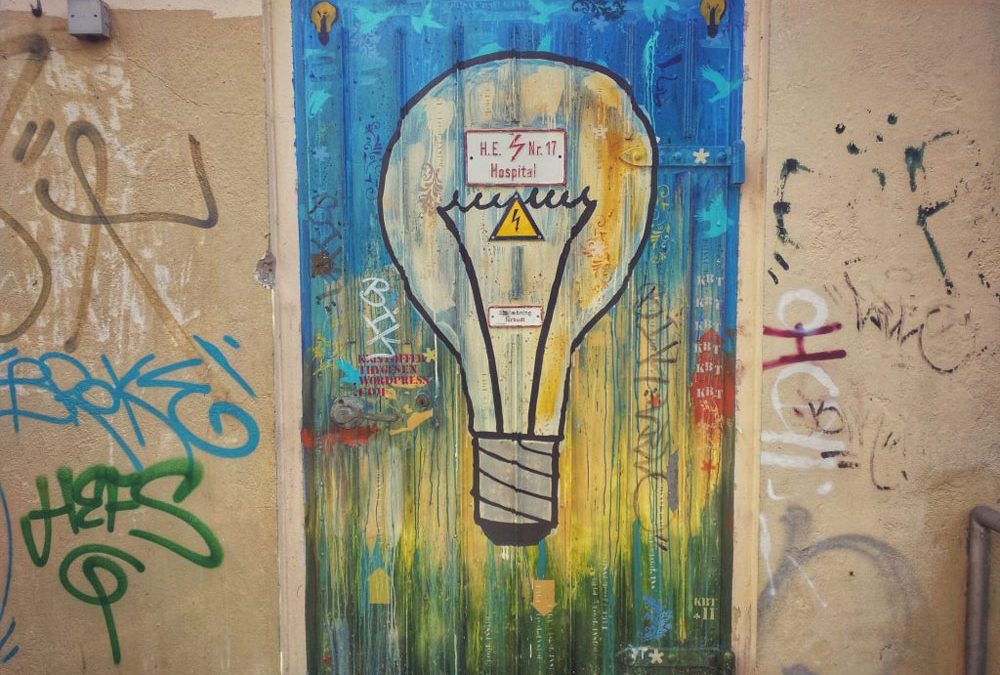Being a creative person is not always an easy thing. I know, I know, your heart bleeds for me. Sometimes getting your ideas gathered up and packaged into a neat little box that can be translated into something usable can be like wrangling cats. Hissing, squirming annoyed cats. At other times, you may think that you will never have another original idea again. There does not seem to be a consistent way to get these ideas and see them through to fruition. This can be true for anyone in regards to creating and inspiration in any field of endeavor.
“You can’t wait for inspiration. You have to go after it with a club.” –Jack London. But is this true, Mr London?
How does inspiration even work? That is a question that many have wondered about. We all want to be struck by that a-ha moment but it is a hard thing to pin down. This is not a thing that is just for the artists out there either; anyone who wants to come up with the “next big thing” would probably love to be able to tap into this power whenever they choose to.
Science had ignored the idea of creativity and inspiration until relatively recently; it was not deemed worthy enough of study until 1950 when psychologist JP Guilford suggested that studying creativity may have some value. Consequently there are a few different theories as to when we are our most creative, and where inspiration for that creativity comes from. Personally, I think that there has not been too much study into this field because many have believed this topic has some of the mystical about it (think of ancient history and the Muses). Creativity and inspiration are not the easiest things to quantify which is something that needs to be done in science so that you can prove or disprove a theory.
A recent study by Thrash and Elliot has faced these challenges. (If you want to read the paper you can find it here: https://www.ncbi.nlm.nih.gov/pmc/articles/PMC4070479/ If you do, make sure you have had your morning coffee or five. Like many scientific papers, it does get a little dry…ironic, making inspiration not so inspirational.) They have addressed the ambiguity of the terms inspiration, creativity, and insight, developed an Inspiration Scale, and discussed the preconception that inspiration is less important than action. They see that there are potential challenges and benefits from the study of inspiration and this study has set the foundation for further research focused on neural underpinnings and understanding the biological basis of inspiration.
Much of the beliefs of the brain and creativity from the past are flawed and have been disproven. There has been an age-old belief of right-brain, left-brain thinking (logic and creativity) which has been proven incorrect by a two-year study that found no significant differences in brain-side dominance among individuals. Unless you have suffered an injury which has severed the right and left hemispheres of your brain, the majority of the population uses both sides. The whole “humans only 10% of their brain” is an idea based in folklore, not in actual science; all the areas of the brain have a function. We may not have reached our penultimate abilities as a species but that has nothing to do with the fact that we need to unlock some hidden portion of grey matter. Have you ever noticed that the more we learn about the brain, the less we seem to know?
How do I get my creative juices flowing and find my inspiration, you may be asking? Many creatives find that the more they try to find inspiration, the more fleeting it becomes. There may be a simple reason for that. Creativity often comes at a time when you are relaxed, distracted, sleepy, or drunk. (If this is true, is it any wonder why many creative people have substance abuse problems? Instead of chasing the dragon, maybe they are actually chasing that little gremlin called inspiration.) This has to do with the brain making new connections and neural pathways at these times and our memories like to sort and connect information based on their relationships with one another. This restructuring causes your brain to become more plastic* and you become more able to form creative and/or inspirational thoughts. This is why people will often have those eureka moments when they are sleeping or in the shower.
“I never made one of my discoveries through the process of rational thinking” –Albert Einstein
So, if you want to have more A-HA! moments, think less…sort of. Engage in activities where you are disengaged and distracted like meditation, exercise, and reading. When you are focused less on the here and now, you allow those little things called ideas to creep through the day to day stuff. Ideas often come when you are least prepared for them so keep a notebook handy so you can write them down before they flit away. In these relaxed times be prepared for the great ideas to come to you (probably at the most inopportune times) and make sure you grab onto them.
–Janice Willson
*Neuroplasticity, also known as brain plasticity or neural plasticity, is an umbrella term that describes lasting change to the brain throughout an individual’s life course. The term gained prominence in the latter half of the 20th century, when new research showed that many aspects of the brain can be altered (or are plastic) even into adulthood. This notion is in contrast with the previous scientific consensus that the brain develops during a critical period in early childhood and then remains relatively unchanged (or static).


Good reading